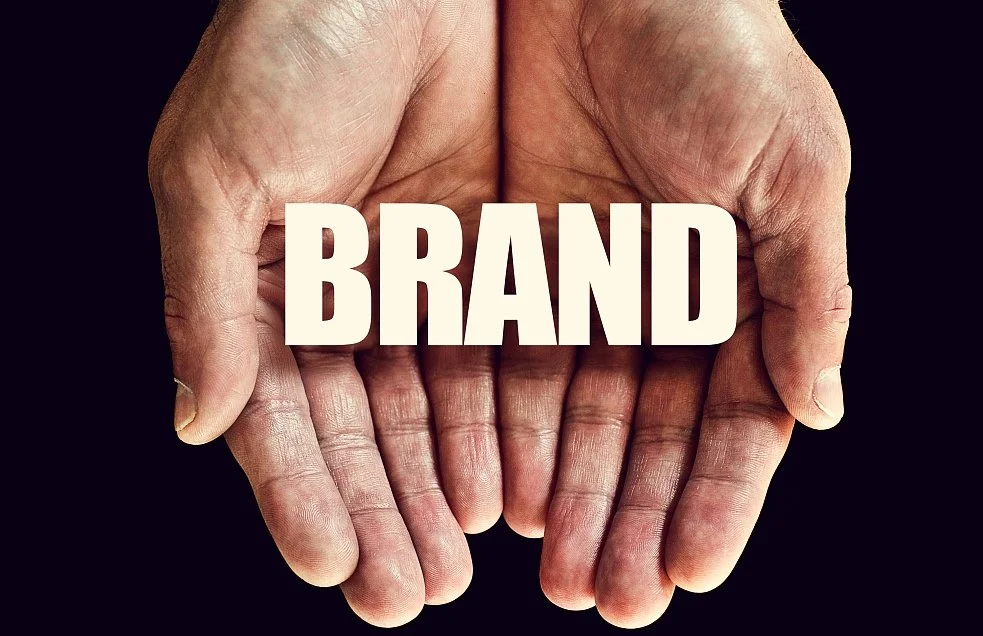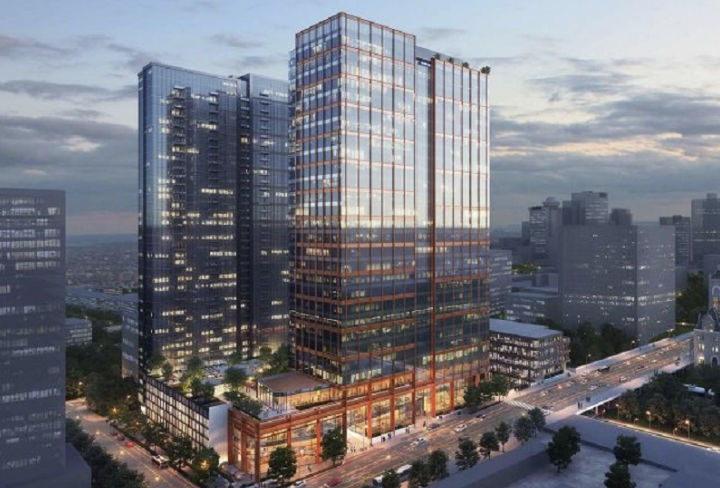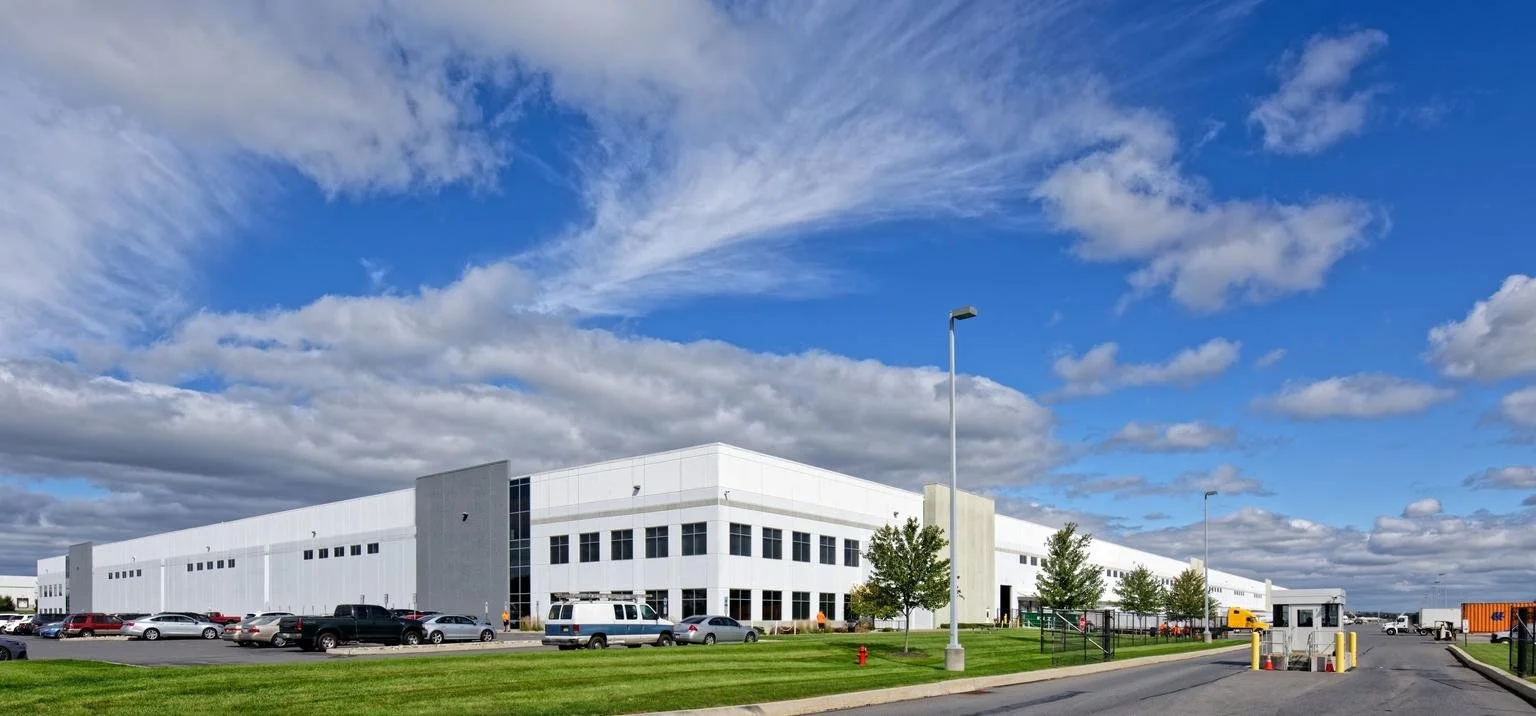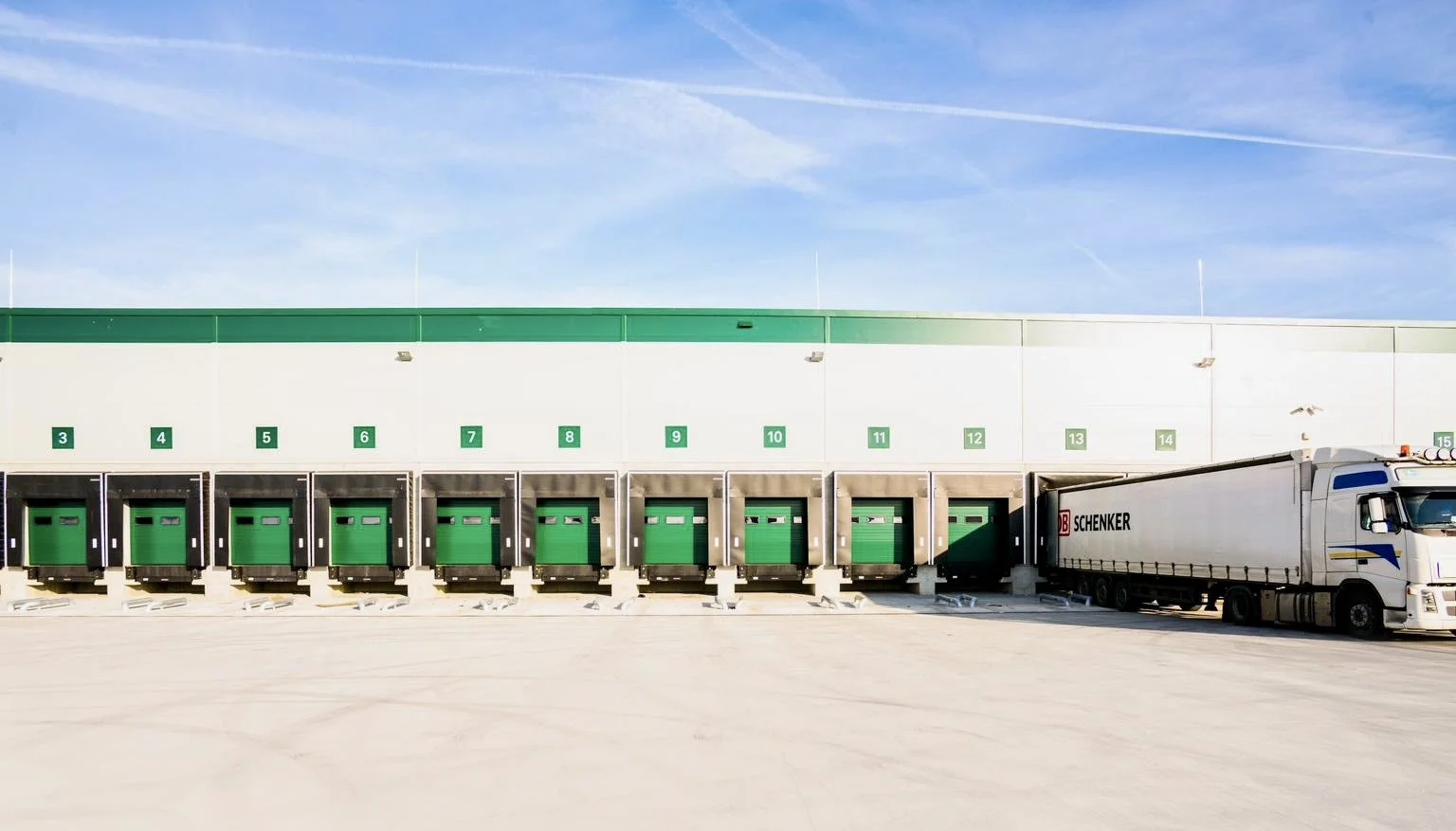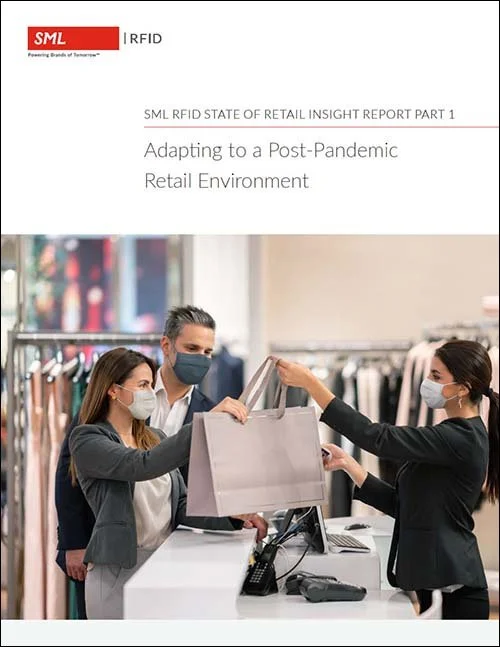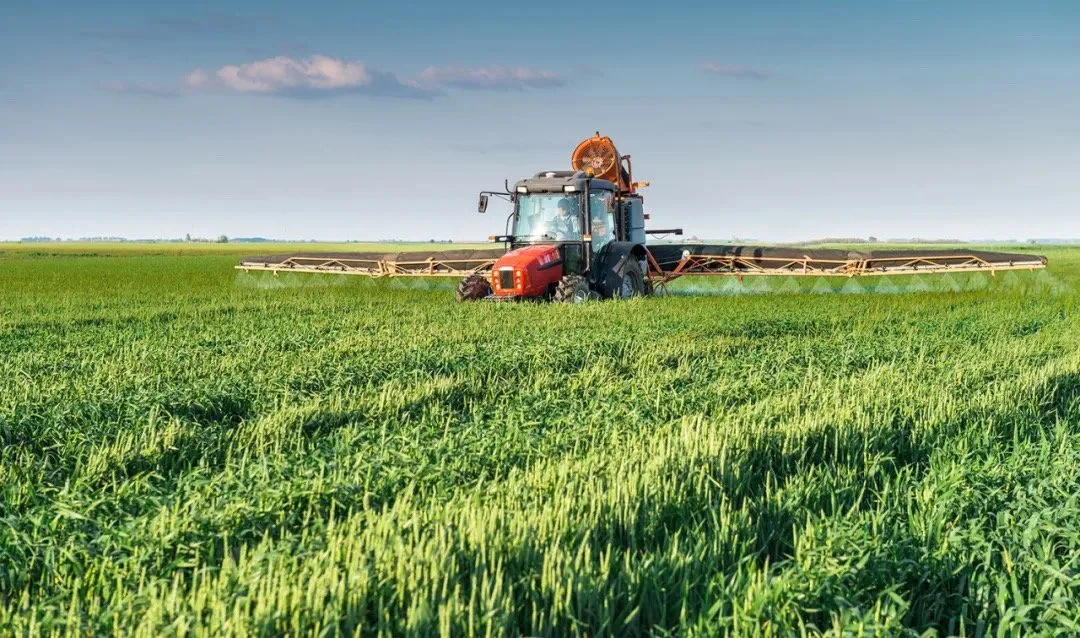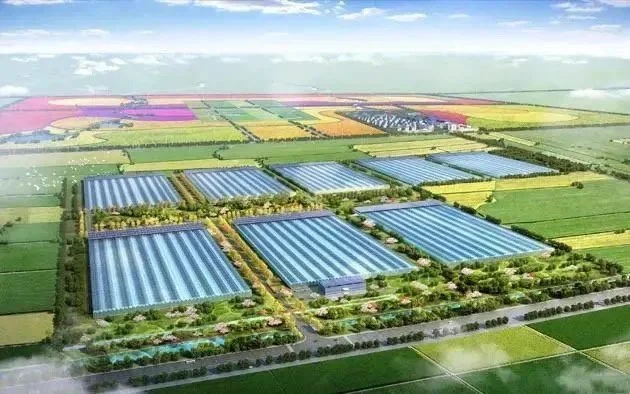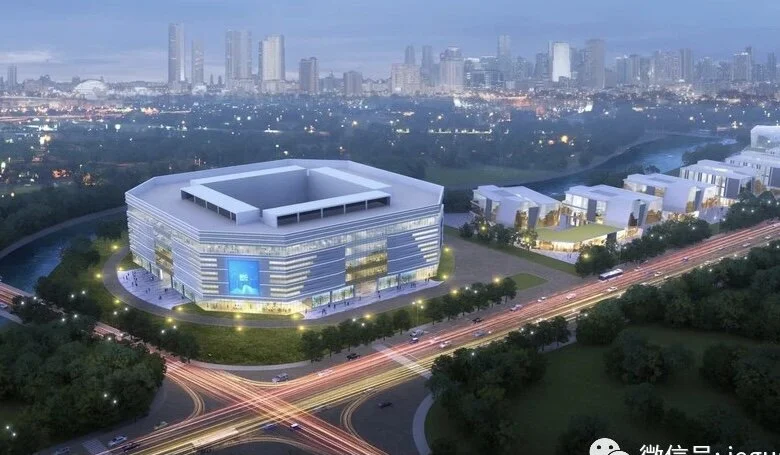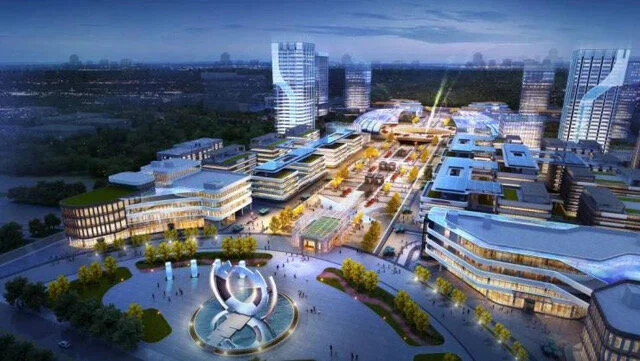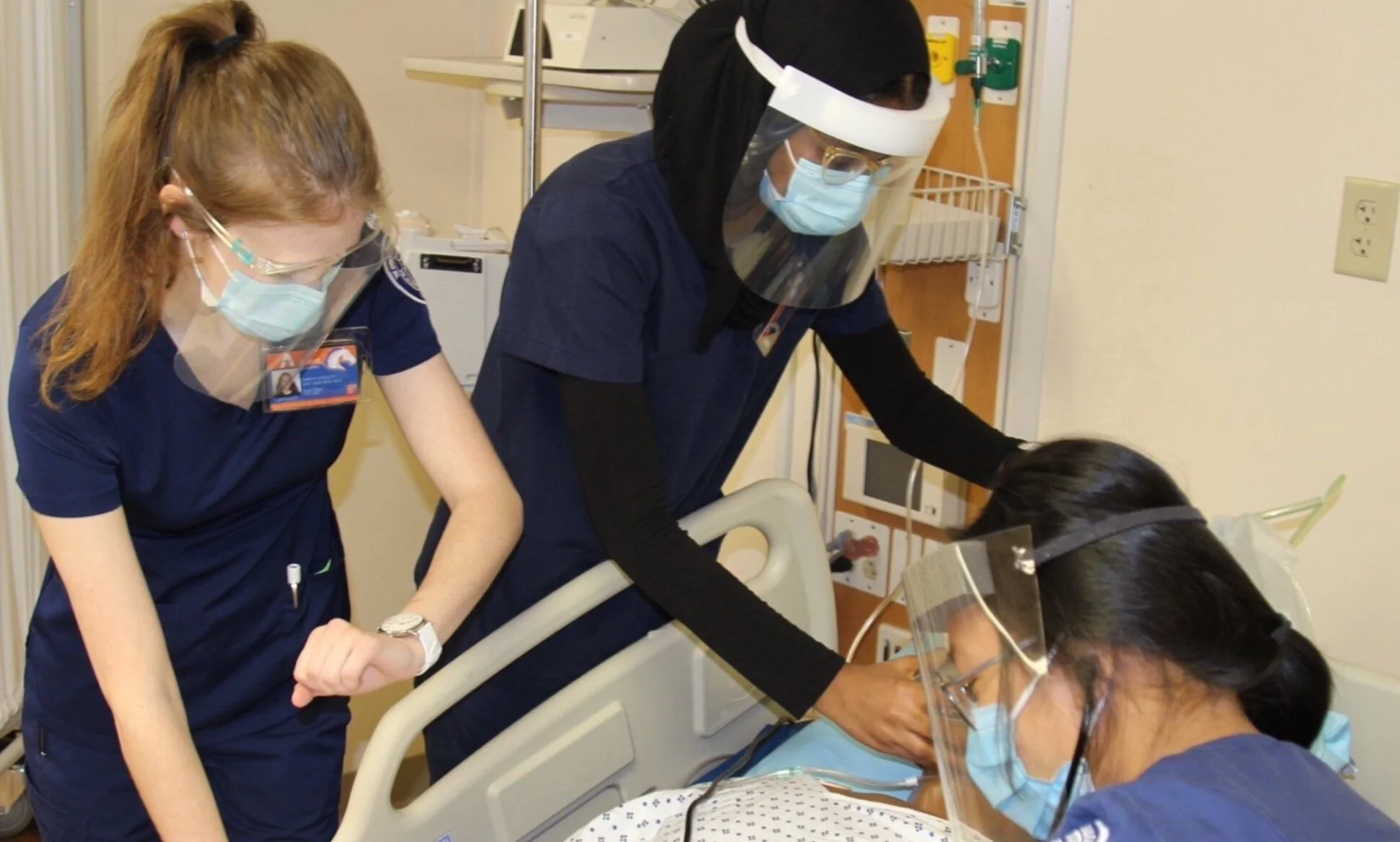The Development of Chinese Digital Tourism Industry
PKU Management Consulting
With the advent of the digital economy, data and algorithms have become key production factors. Platform has become an important mode of economic organization. Digital technology has promoted cross-border integration as the new normal. The marginal cost of online products has been greatly reduced. Consumption and production in the digital economy have become highly interconnected. In this context, make full use of the characteristics of the digital economy, promote digital economy and cultural tourism combination, play to the advantages of the platform economy, strengthen regulation, promote the cultural tourism industry and other industries interconnection, has become a"Digital Tourism"A new track for industrial development.
"Digital Tourism"From the Internet economy, which used to be the backend of the market, we will move forward to the digital transformation of all factors, processes and forms of business in front-end factor markets, new infrastructure at the bottom and back-end industrial applications. Intelligent analysis and management, optimize existing business value chain and management value chain, realize from business operation enablement to product / service innovation, and then realize enterprise transformation and upgrading. Technological innovations such as AI, cloud computing, 5G, digitalization, networking, intelligent upgrading and big data will equip the tourism industry with the "wisdom core" of high-quality development. Promote the strong recovery of the cultural tourism industry, accelerate innovation and iteration, the cultural travel industry has begun to upgrade to the "number of intelligent cultural tourism."
"Digital Intelligence and Cultural Tourism" cannot be separated from a series of revolutionary breakthroughs in digital technology, but also from China's huge consumer market. "Digital Intelligence and Cultural Tourism" breaks the barrier of managers, operators and consumers, presents an explosive development trend, provides reference for tourism decision-making for leaders at all levels and departments, and realizes the scientific and efficient tourism decision-making.
Ⅰ. Policy support and business development
⒈Top-level policy design
In 2020, Ministry of Culture and Tourism, National Development and Reform Commission and other departments successively issued the "Opinions of the Ministry on Promoting the Quality Development of Digital Tourism and Cultural Industry" and the Opinions on Deepening "Internet + Tourism" to Promote the High-Quality Development ofTourism, " This year, the Ministry of Culture and Tourism issued the "14th Five-Year Plan for Cultural and Tourist Development" and the "14th Five-Year" Cultural Industry Development Plan, " As well as the "5G Application" Action Plan (2021-2023) jointly issued by the Ministry of Industry and Information Technology and other 10 departments in July, all of them are escorting 5G + cultural tourism from the top-level design level. With the support of a series of policies and technologies such as 5G, big data, AR, VR and cloud computing, digital tourism has gradually become the main direction for the transformation and upgrading of the tourism industry.
⒉Development of industry
Culture and tourism are important applications of digital tourism economy. The implementation of digital strategy of cultural industry is also an important deployment of the Fifth Plenary Session of the 19th CPC Central Committee. From the logic of industrial growth, since the outbreak of New Canopy Pneumonia, digital / digital intelligence has become the driving force for the development of the cultural and tourism industries. According to the data of the National Bureau of Statistics, in 2021, the operating income of 16 sectors with obvious characteristics of digital culture and tourism industry will reach 3,962.3 billion yuan, an increase of 18.9% over the previous year; The two-year average growth rate was 20.5 percent, 11.6 percentage points higher than the average for cultural enterprises. Accounting for 33.3 percent of the operating income of cultural enterprises.
⒊Type of industrial development
Culture is the precipitation of time and space, tourism is the transfer of space and time.The development and application of VR / AR, NFT, AI, cloud, PUGC game platform, and human-computer interaction devices have provided material support for the progressive technological breakthrough and business model innovation of "digital cultural tourism." The ultimate "Metacosmos" connects the physical world and the digital world, reshapes the human economic system, reconstructs the human way of life, and opens up a new format for the development of cultural tourism:
Smart Tourism Products and Services:It includes highly intelligent tourism products and services characterized by smart hotels, smart rooms, unmanned shops in scenic areas, unmanned sales vehicles and other features, as well as intelligent service characterized by self-check-in at contactless hotels and scanning QR code in scenic spots.
Online Blog:With the help of Internet, AR, VR, AI technology, museums, art galleries, etc., to achieve cultural relics, works of art information scanning, processing, processing. Tourists and viewers watch cultural relics and works of art online with the aid of devices, and improve the viewing experience of tourists through independent tour, zoom, rotation, 360-degree full scene experience.
Immersive scene:Using digital technology, VR, AR, AI and so on, theater, performance hall, theater to create immersive scene, such as immersive exhibition, immersive playground, R / VR theme park, holographic theme restaurant.
Intelligent Manufacturing of Tourism Equipment:Integrating and applying new technologies such as AI, AR, VR to produce smart skis, smart helmets, smart clothing and other travel smart equipment and supplies. Such as immersive roller coaster, driverless tour car, AI sightseeing car and other attractions and sightseeing car intelligent manufacturing. In addition, the integration of things, the Internet, artificial intelligence, big data, cloud computing, cruise yacht, RV, cable car and other tourism equipment manufacturing enterprises intelligent upgrade, The production process, sales process, after-sales process, such as the whole process of digital tourism.
Tourism Data Operation:Innovative and optimized data elements will further promote the supply-side reform of the tourism industry. In the process of the development of digital tourism, The development data of online core digital assets and related products and services of destination and tourism enterprises formed by big data and Internet technologies will shift to asset value. Data trading and data asset securitization will form new business forms and develop new economic models.
Ⅱ Characteristics and development logic of industry
⒈Industry characteristics
Compared with the traditional economy such as agriculture and industry, the digital tourism economy has its distinct new characteristics. As a result, compared with traditional cultural tourism, digital tourism has undergone significant changes in product mode, business mode, management mode, thinking mode and so on. Digital tourism has the characteristics of unlimited resources, unlimited time and space, data-driven, multi-identity and so on. It brings a vast prospect for the development of tourism industry.
From the spatial gathering form,The traditional cultural tourism resources are unique and monopolistic, which continuously promote the development of spatial agglomeration, which will lead to excessive accumulation of resources in the space and cause overcrowding of tourists in scenic spots and tourist destinations. Therefore, the cultural tourism industry planning, marketing and operation of the various aspects of the industrial ecology extended to multidimensional space and time. Breaking the imprisonment of space, thinking about the development of cultural tourism industry from a new dimension, which is the underlying logic of digital tourism and new profit growth space.
From a marketing perspective,Once the new dimension of time and space is established, the user does not need to reach the actual destination, only through the mobile terminal, In fragmented time, you can experience digital cultural tourism products and services, mobilize and stimulate user interest, and then flow to cultural tourism destinations or consumption of digital tourism products or services, providing an immersive experience that touches the emotions of users.
From a planning and operational perspective,A new museum built by the fusion of time and space, using digital technology to digitize many precious cultural relics, There is no longer any need for physical exhibition. Customers roaming in the museum can enjoy the real scene of cultural relics through virtual reality at any time, breaking the limit of time and space. Visitors can travel through the past and imagine the future, obtain unprecedented experience and establish a new view of space and time.
⒉Development logic
Starting from strengthening the basic system of cultural tourism industry,We will promote the digitization of public culture and expand investment space. Construction of digital tourism infrastructure system with digital transformation, intelligent upgrading, integration of innovation and other services. Such as information infrastructure - culture and tourism big data center, integration infrastructure - digital museum, innovation infrastructure - intelligent cultural and creative industrial park. Optimize the supply structure of tourism industry, improve the quality of supply. We will foster a number of leading digital tourism enterprises and develop digital tourism and cultural tourism intelligent industrial parks. We will build a number of regional cultural industrial belts, develop world-class scenic spots and resort areas with rich cultural heritage, and create a batch of national tourism and leisure cities and blocks with distinctive cultural features.
Focus on telling the Chinese story well,Externally, we should promote international communication through innovation, strengthen international cultural exchanges and multi-level dialogue among civilizations, encourage and support digital tourism enterprises to "go global" and promote international advanced digital tourism companies to "bring in." Internally, seize the "yuan universe" tuyere concept, depth excavation of the essence of traditional culture, vigorously develop the country tide, cartoon as the representative of the cultural and creative industries. Promote consumption upgrading and stimulate new consumption potential.
Comprehensively promote digital tourism consumption,Seize the opportunity to expand holiday consumption, vigorously develop red tourism, rural tourism. We will use digital technology to transform and upgrade food, housing, transportation, travel, shopping and entertainment, develop new modes and formats of digital tourism consumption, improve the quality of consumer services, and promote the integrated development of online and offline consumption.
Innovation in tourism management model,The use of digital tourism technology, improve tourism management system, enhance the ability of comprehensive management systems engineering. Such as scenic digital security system, scenic intelligent management platform.
Play the value and role of data,Under the premise of ensuring data security and protecting personal information, the transaction of cultural relics digital assets, cultural creation digital assets and cultural tourism data assets and other core element assets will be promoted in an orderly manner. Promote cultural tourism digital assets and data assets.
Enhance industrial efficiency,Before we do industry is to land, finance, culture and other resources, but the use of resources is not high efficiency. With digital technology, it can shift from efficient allocation to deep mining, and through continuous optimization, significantly improve the effective conversion rate of resources.
⒊Suggestions on the Development of Digital Tourism Industry
① At the industry level
During the prevention and control of the epidemic, the achievements of the digital development of culture and tourism were concentrated and recognized by the public. Digital tourism has the characteristics of low cost, large flow, easy iteration and strong realization. Digital tourism can transform traffic to higher consumption, and establish a higher level of dynamic balance between investment and consumption. Industrial development should achieve:
Digital technology deeply embedded in the tourism industry,Must be combined with the local characteristics of cultural tourism resources, the formation of scale, form complementary, form potential energy, to have the main products, the main project. New technologies and means should complement rather than replace them. We should integrate tradition with modernity and improve social and economic benefits.
Actively develop digital literature and art,We should actively promote the fashion of traditional art, in line with the aesthetic way of the times, tell Chinese stories in the world language, and show traditional culture in a lively and three-dimensional manner; Promote the image of stage art, make full use of image thinking and digital technology, to achieve the "virtual and real" Chinese flavor, Chinese style; Promote efficient communication under the thinking of "Internet +," and let the audience feel the charm of art without leaving home.
The core of digital tourism is to promote integration,Including the integration of technology and industry, integration of resources, cultural tourism integration. The integration of culture and tourism needs the support of science and technology, and the development of intelligent tourism is also inseparable from scientific and technological support. It is the need of industry, society and development to promote the integration of culture and tourism development. Science and technology + tourism, not a simple superposition, mechanical listing, to follow the law of development, to test the actual effect of industry, society, time. Enterprises need to constantly learn and innovate to enhance competitiveness. At the same time, seize the policy opportunity to promote the development of digital tourism industry, through improving online training capacity, upgrading the function of online platform and strengthening digital tourism marketing and other means, to comply with the new trend of the cultural tourism industry development.
② Government level
The CPC Central Committee has proposed a new development pattern with the domestic cycle as the main body and the international and domestic double cycles mutually reinforcing. Relevant leaders should grasp the general trend of the times, make scientific decisions, transform from traditional cultural tourism to digital cultural tourism, firmly grasp the connotation of "double cycle," and open up a new development pattern of digital tourism.
Using digital thinking,Through the flow of data elements, government construction should realize from "digital cultural tourism" to "digital governance." We will promote the formation of a governance system in which government and enterprises participate, share information, and interact with each other in an efficient manner, speed up the overall allocation of social resources, stimulate innovation, and enhance digital governance capabilities. We will support the development of digital infrastructure such as data centers and cloud platforms, encourage enterprises to participate in the opening and cooperation of digital infrastructures, strengthen the construction of mobile Internet infrastructure, such as apps and mini programs, and accumulate data assets. Excavate and cultivate original tourism IP with distinct Chinese cultural characteristics, and create a widely influential digital tourism brand.
Scientific evaluation, careful investment,According to local characteristics and practical application, local conditions should be selected. Avoid investing heavily in some tall, flashy hardware infrastructure, with an APP, make a product, built a platform, can not once and for all. The lack of refined operation will lead to a huge investment of funds, but not to meet the needs of the public experience, nor bring economic results.
The introduction of "sophisticated" talent,Especially with interdisciplinary, interdisciplinary talents; To establish the "production + learning" personnel training mode, based on the current demand of market economy, pay attention to industrial practice, training "practical talents"; Improve the talent evaluation standards, formulate the identification method of digital compound talent, formulate talent support policy. From the introduction of talent, training, evaluation, to play a role in the industry, all-round control tracking.
Study and formulate supporting policies,Based on the in-depth investigation of cultural tourism enterprises, digital tourism towns and tourism platforms, the relevant supporting policies on system design, planning guidance, organizational guarantee, tax incentives, talent support, intellectual property protection and other aspects are formulated. Speed up the establishment of laws and regulations, management norms, administrative regulations, assessment system and industry statistics system to adapt to the development of digital tourism industry to provide a good environment for the digital tourism development.
③ Enterprise level
Open up the data chain,Take scenic spots as an example, it is difficult to get through and share data between scenic spots and related enterprises. Build a smart tourism ecosystem, including senseless ticketing, automatic guidance, intelligent monitoring, security, smart restaurants, cultural relics protection, scenic spot operation and so on.
Strengthen the processing of big consumption data,Collection, storage, processing, analysis and use of cultural tourism data, to build cultural tourism product and service system, to promote enterprise supply and demand allocation and accurate docking.
Building a data aggregation platform,Support upstream and downstream enterprises to open data, promote the whole process of data collection, improve the level of data circulation and commercial sharing.
Build a data security responsibility system,Enhance data security services, improve the standardization and security of network data use in cultural and tourism enterprises.
In short, scientific and technological innovation, model innovation and application innovation are the only way to the integration of digital technology and tourism industry. There is no shortcut or curve to overtake. Digital technology and cultural tourism industry mutual enablement, become a strong support for the transformation of cultural tourism. The intelligence and intelligence index of cultural and tourism industry directly reflect the happiness index of people's better life.
2021 Nanjing Industrial Park Market Survey Report (Internal Reference)
Industrial Real Estate Research
1. background
In 2021, the total GDP of Nanjing is 1635.532 billion yuan, ranking pthe tenth in the country, the second in the province. The industrial pulling effect is obvious.In terms of plate, Jiangning District and Jiangbei New Area continue to lead the way, both standing at 200 billion level.
The added value of the city's industries above designated size reached 354.396 billion yuan, an increase of 10% year on year. The development of advanced manufacturing industry was particularly rapid. The added value of high-tech manufacturing increased by 15.5% year on year, and the proportion of added value in the secondary industry in GDP also increased from 35.2% to 36.1%, which is the key driving force for the economic growth of Nanjing in 2021.
The GDP of Jiangning District in 2021 is 281.047 billion yuan, and that of the Jiangbei New District is 256.17 billion yuan. They are the only two strong economic districts in Nanjing with a total GDP exceeding 200 billion yuan. The economic strength is far ahead of other districts. The GDP of Lishui District in 2021 will be 100.095 billion yuan, breaking the 100 billion yuan mark and realizing a relatively large leap forward.
2. Land market
Total number of land (scientific research land) transactions in 2021 is 28; Total area of land traded:About 598,000 m2.according to Land bidding and auction transactions, the area of scientific research land in 2021 compared to 2020, decreased by about 76%.The three regions with the largest turnover were Yuhuatai District, Jiangbei District and Pukou District.
3. Research selection
It lasted for three months, the three departments cooperated to investigate 36 projects, covering 8 administrative districts in Nanjing. The sampling standards were public sales or leasing of scientific research offices and commercial projects that formed a competitive relationship.
4. Internal parameter conclusion
4.1 Price:
[Sales level] In the research samples of all districts in the city, the sales price of scientific research and office products in Jianye District is the highest, Jiangbei New District and the main city of Xuanwu and Qixia are in the second echelon, and Yuhuatai and Jiangning are the last. The average price of single-family products in each district is 3000-6000 yuan / m2 higher than that of flat products.
[Lease level] In the research samples of all districts in the city, the rental prices of scientific research offices in the main urban areas of Qinhuai and Gulou are leading, and the average rental price of Jianye and Basaltic plates is 2-3 yuan / m2 / day, and Jiangning District is the last.
4.2 Deactivation:
[Sales level] In the research samples of all districts in the city, Yuhuatai District ranked first in terms of sales volume of scientific research carrier and average sales of single project in 21 years due to the influence of multiple favorable factors such as clear industrial positioning, strong software industry foundation and strong policy support. Jiangning and Jiangbei New Area follow in terms of sales volume by virtue of their respective industrial advantages and cost-effective scientific research products. Basaltic, Jianye and other regions subject to pre-sale carrier is limited, ranked by.
[Lease level] Among the survey samples of various districts in the city, Yuhuatai District and Xuanwu District have sufficient carrier supply, relatively convenient location and moderate rental price. The total amount of scientific research carrier rental in 21 years and the average rental volume of single project are in the forefront. The Qinhuai District and Gulou District of the main city plate rely on the conditions of the old project, the construction of silicon alley and other conditions, the core location conditions of main city, and also maintain a high rental level.
4.3 Supply:
[Future supply] Based on a comprehensive analysis of the stock situation of the research project samples and the volume of the new scientific research land in 21 years, the supply level of scientific research office carrier (including sales and leasing) in Nanjing will be saturated in the future.Jiangbei New Area (including Pukou District) is affected by the new area policy support, the largest supply;Yuhuatai District relies on the large stock of software valley and the impact of new lots of research land, the late supply is sufficient.Qixia and Jiangning District existing projects still have a large number of inventory.In addition to the impact of regional commercial projects, it is expected that the future of Nanjing scientific research office market competition will be more intense.
An Overview of Rural Entrepreneurship and Future Directions
Dennis Barber
Abstract
Prior research shows that rural entrepreneurship has its own distinct elements and deserves additional attention within the research community. The frameworks and methodologies from studies focused on high-growth and technology-based entrepreneurship are often used to explore rural entrepreneurial activities. This incongruence limits our understanding of the true impact entrepreneurship can have on rural communities. The articles in this special issue help advance our knowledge of rural entrepreneurship as a distinct field of study, and add to our understanding of its impact in the rural context. Additional research avenues are suggested.
An Overview of Rural Entrepreneurship and Future Directions(EN)
An Overview of Rural Entrepreneurship and Future Directions(CN)
5 Steps To Successful Brand Innovation
Equibrand
Walt Disney once said, “I only hope that we don’t lose sight of one thing – that it was all started by a mouse.”
With what began as a sketch of a mouse, The Walt Disney Company utilized product and process innovation to become an international media powerhouse encompassing a broad range of businesses.
Innovation is vital to an organization’s long term success. But how does your organization manage the innovation process? Rather than rely on intuition, luck or an occasional brainstorming meeting, innovation requires a systematic approach.
Here are some specific actions you can take to insure your innovation process is successfull:
Focus innovation on strategic opportunity areas (SOAs). Innovation is more than, “I have an idea”. Innovation needs to be focused. First, strategically identify market-based opportunities (innovation buckets). Second, focus resources on addressing a particular problem until it is solved.
Use ideation and creative brainstorming to generate solutions. Drawing on deep customer insights, use creative problem solving techniques to come up with viable solutions.
Develop and optimize concepts using an iterative process. This involves using prototypes, storyboards, models and other concepts to demonstrate the idea and seek input. Iteration is key. As you learn more, you get closer to the right solution.
Use a portfolio and pipeline perspective to plan innovation. This ensures a strategic portfolio approach consisting of incremental vs. transformational ideas. It also ensures a constant stream of innovation.
Screen concepts and implement. Screening and implementation occurs at various stages of innovation. The death knell to innovation is the direction, “Prove it”, so you need to be careful when and how you screen ideas. Measures are looser initially, becoming more objective and quantifiable closer to launch.
The strongest brands and businesses are built upstream through the combined principles of insight, identity, and innovation.
Some Aspects of Corporate Social Responsibility and Company Reputation
Evidence from Serbian Business Environment
Biljana Chroneos KrasavacUniversity of Belgrade, Faculty of Economics, Serbia http://orcid.org/0000-0002-1486-4825
Ema KaramataUniversity of Belgrade, Faculty of Economics, Serbia http://orcid.org/0000-0002-3301-1094
Jasna Soldić-AleksićUniversity of Belgrade, Faculty of Economics, Serbia
Katica RadosavljevićUniversity of Belgrade, Faculty of Economics, Serbia
Abstract
Research question: This paper examines some aspects of corporate social responsibility (CSR) and company reputation (CR) in the Serbian business environment during the COVID-19 pandemic. Motivation: The survival, growth and development of companies in the current business environment are conditioned by their capability to reach socially responsible decisions and carry out activities that meet the expectations of different stakeholders. The main motive for this research has stemmed from the current global corona virus pandemic and the way this state of affairs has affected socially responsible behaviour of companies. The research of activities Serbian companies carried out in the time of crisis prompted us to explore the possible relationship between corporate social responsibility and its effects on corporate reputation, and consequently business results. Research idea:An empirical research has been conducted with the view to investigate the position of the public on the importance and impact of CSR on corporate reputation, and also to determine the key factors that guide the decisions of people living in the Republic of Serbia to shop, bearing in mind the socially responsible behaviour of companies. Data: The sample included 173 respondents, the number that allowed valid conclusions. The questionnaire was anonymous; all the respondents were residents of Serbia with access to the internet and willing to fill in the questionnaire, either by following the link advertised on social media or replying to the e-mail. Tools: The gathered data were processed and analysed using descriptive and explorative statistics. Research hypotheses were tested by: Frequency tables, Crosstable procedures, Paired Samples t-test, Spearman`s coefficient of correlation, Chi-square test, and Phi coefficient of correlation, resulting in conclusions and corresponding suggestions. Findings: Respondents perceive companies as social actors driven not only by profit, but by the interest of the community and their business environment. They believe companies can assume their responsibilities through different aspects of doing business, especially by contributing to the improvement of their consumer’s lifestyle. The majority of respondents tend to buy from companies they perceive as socially responsible from the point of view of further development of the society and their ethical behaviour towards the community. Contribution:The findings can encourage the company’s management to direct their financial and organizational resources into the better management of the CSR, especially during the crisis, because solidarity and care for the most vulnerable part of the population lead to an improvement in the reputation and business results of a company.
5 Steps to Lose Weight and Keep It Off
https://www.heart.org
Learning to balance healthy eating and physical activity can help you lose weight more easily and keep it off.
Take it from people who have successfully maintained weight loss:
98% have modified their eating habits.
94% have increased their physical activity, especially walking.
Source: National Weight Control Registry
Set realistic goals.
Know where you are today so you know how to get where you want to be. Learn your Body Mass Index (BMI). Set yourself up for success with short-term goals, like “I will make lifestyle changes which will help me lose (and keep off) 3-5% of my body weight.” Short-term goals can seem more achievable and keep you on track toward your long-term goals.Understand how much and why you eat.
Use a food diary or tracking app to understand what, how much, and when you’re eating. Being mindful of your eating habits and aware of your roadblocks and excuses can help you get real about your goals.Manage portion sizes.
It’s easy to overeat when you’re served too much food. Smaller portions can help prevent eating too much. Learn the difference between a portion and a serving and how to keep portions reasonable.Make smart choices.
You don’t have to give up all your favorite foods. Learn to make smart food choices and simple substitutions instead. Discover healthy snacks and how fruits, vegetables, and whole grains help keep you fuller longer.Be physically active.
Physical activity is anything that gets your heart rate up, like walking. Aim for at least 150 minutes of moderate activity a week. Move more, with more intensity, and sit less.
Will RFID Help Loosen Amazon’s Grip On Retail?
Amazon can't be happy about Walmart’s decision to dramatically expand the use of RFID in its fleet of stores. Here’s why.
An US giant Amazon employee passes by its logo on the opening day of the new distribution center in Augny, eastern France, on September 23, 2021. (Photo by SEBASTIEN BOZON / AFP) (Photo by SEBASTIEN BOZON/AFP via Getty Images)
AFP VIA GETTY IMAGES
Retailers typically struggle to maintain an accurate view of the precise inventory holdings of each of their stores. This is a huge problem in some merchandise categories, and less so in others. For companies with large store fleets, this has traditionally been treated as a cost of doing business.
Brick and mortar retailers also struggle to effectively manage —- and in some cases even find —- the inventory residing in their stores. This too has been shrugged off as a cost of doing business. And let’s not forget another chronic drain on profit. Theft of store inventory by organized criminals, petty shoplifters, and dishonest employees.
RFID is already helping Walmart fix these issues in several General Merchandise categories (Apparel, Footwear, Sunglasses, Watches, Jewelry) with more now on their way. Elevating inventory accuracy and visibility benefits Walmart’s e-commerce business too, not merely the stores.
Simply put, some longstanding advantages enjoyed by Amazon over Walmart are in the process of being diminished.
What will hurt Amazon even more is if other competitors similarly begin leaning harder on RFID. Or in the case of retailers like Kohl’s, who are quite late to this party, simply begin leaning.
Let’s examine a few of these companies in more detail.
Target
Around 2017 Brian Cornell and the Target team exhibited tremendous foresight (and a high RFIQ) when they decided to begin using RFID in all “soft” Home Goods categories, and not merely use it in Apparel and Footwear.
Target is known to have also begun using RFID on its Heyday brand of Consumer Electronic accessories in recent years, and perhaps on other products too.
It’s fair to say that an expansion of Target’s program into additional categories is long overdue. And it’s possible this expansion is already underway. The obvious questions are this:
1. By January 2023, in which merchandise categories will Walmart be using RFID and Target not?
2. Has Walmart’s category expansion accelerated, or is it likely to accelerate, Target’s plans to use RFID in these categories?
Bed Bath & Beyond
Walmart sells many of the same types of products typically carried by BBBY. But the latter generally carries higher priced merchandise, making Walmart merely an indirect competitor. But the same can’t be said of Target and Macy’s, both of whom have been using RFID for years in many of BBBY’s core categories. Nor can it be said of Nordstrom, Nordstrom Rack, Belk, and Dillard’s, who have begun doing so too.
To what degree will Walmart’s category expansion accelerate the upgrade of BBBY’s “store level” inventory management capabilities?
Best Buy
There is an opportunity here for significant coopetition, defined by Oxford as “collaboration between business competitors, in the hope of mutually beneficial results”. Best Buy and Walmart both stand to gain tremendously if they —- and other retailers with large Consumer Electronics businesses —- step up their coordination with big global brands like Samsung, LG, Sony, and Apple. Industry standards organization GS1 will continue to play an important role facilitating those discussions.
So, it begs the question. Now that Walmart has joined the list of retailers using RFID to manage Wireless and Electronics inventory, will Best Buy’s leadership team elevate Store Level Inventory Accuracy as a strategic priority?
The Bottom Line
The longer it takes retailers to fix the inventory management issues in their stores, the longer Amazon will keep laughing all the way to the bank.
Glimmers of hope in the U.S. office market
Looking for signs of hope in the U.S. office market? Here’s one: The country’s office sector notched positive net absorption in the fourth quarter of 2021, the first time this has happened since the start of the COVID-19 pandemic.
1100 BROADWAY IN NASHVILLE, IS AN EXAMPLE OF THE NEW-CONSTRUCTION OFFICE PRODUCT AT THE CENTER OF THE SECTOR'S FLIGHT TO QUALITY. (PHOTO: HASTINGS ARCHITECTURE.)
That glimmer of hope comes courtesy of JLL’s Fourth Quarter U.S. Office Market Overview. According to JLL’s report, leasing velocity in the office sector increased by 9.2% in the fourth quarter of last year. That boosted 2021 office leasing volume 14.6% above 2020 levels.
This doesn’t mean that the U.S. office market is back to normal, though. Even with the positive absorption seen in the fourth quarter, leasing activity in the last three months of 2021 was still only at 71.3% of pre-pandemic levels.
The fourth quarter leasing numbers, though, are a positive sign. They come after six quarters of occupancy losses in the office sector totaling 152.9 million square feet of negative net absorption.
And in another sign of the office sector’s struggles, JLL reported that concessions for CBD Class-A space are still at significantly elevated levels. The fourth quarter report says that rents for this type of space are still 7% below pre-pandemic norms. JLL predicts that this figure will improve only modestly in the coming months.
When tenants are filling up new space, it’s often in newly constructed buildings. JLL pointed to a flight to quality in the office sector, as companies take advantage of concessions to move into office spaces that they might not have been able to afford before the pandemic hit.
According to JLL, net absorption since the onset of the pandemic surpassed 51 million square feet in newly built office space.
The impact of this can be seen in vacancy rates. JLL said that in the fourth quarter of last year, the vacancy rate in office product delivered before 2015 was 19.7%. In office product delivered after 2015, the vacancy rate stood at 18.9%.
In the Midwest, Nashville remained one of the stronger office markets. JLL said that office leasing activity here in 2021 was 73.1% of what the city saw in 2019. That might sound like a negative, but this actually ranks Nashville’s office sector as one of the better-performing ones during the pandemic. Consider that in Chicago, office leasing activity in 2021 was only 33.2% of what it was in 2019.
HOW MUCH DOES IT COST TO RENT A WAREHOUSE?
Prologis
COSTS VARY BY A WIDE MARGIN
Warehouses come in all shapes and sizes, and depending on the amount of space you need and the services you want to employ, costs vary by a wide margin.
The problem is, it isn’t always easy to calculate the monthly cost of leasing warehouse space before you sign on the dotted line. This is especially true with many landlords and brokers that describe their rates and fees using confusing acronyms instead of straightforward language.
This guide discloses what to expect concerning the costs associated with renting warehouse space.
Calculating how much your warehouse is going to cost every month typically involves three primary numbers: the amount of space you need (in square feet), the base rental rate (monthly or annually) and the estimated operating expenses (also called NNN or CAM—more on that below). Don’t forget—you will also be required to pay for electric and water use.
A triple net lease (NNN) is a structure where the tenant is responsible for paying all operating expenses tied to a property. The landlord, meanwhile, is not responsible for expenses incurred as a result of operating the business on the property.
Billing is typically a monthly or annual occurrence. Here is an example of how to calculate monthly rental rates for a warehouse in which you need to rent 5,000 square feet of storage space, taking into account the following rates:
Average base rental rate: $0.85 per square foot per month
Estimated operating expenses (NNN): $.25 per square foot per month
For this warehouse, the total asking lease rate is $1.10 per square foot per month. Therefore, the total monthly rent would be $5,500 (5,000 x $1.10).
WHAT YOU NEED TO KNOW ABOUT CALCULATING COSTS WHEN RENTING A WAREHOUSE
When comparing warehouse properties, it’s important to ask the landlord or broker the right questions to get an accurate estimate of the monthly rent. Be sure to ask:
Who is responsible for performing and paying for maintenance?
Who is responsible for performing and paying for repairs?
Who is responsible for replacing equipment attached to the warehouse, such as the HVAC unit?
Would I have to pay for a common area or for only the actual square footage of the space?
Would I be required to install signs?
Is the landlord willing to pay for any tenant-made improvements?
The answers to these questions are important to know early because you don’t want to discover you’re responsible for such expenses after signing the contract. Should something go wrong that you are responsible for repairing or replacing, your budget could be upended instantly.
Transitioning and Sustaining Community Connection During COVID
Catie Carlson / Library Director University of Cincinnati
Kathy Ladell / Reference Librarian University of Cincinnati
Abstract: Entering a higher education institution as a new library employee often means identifying your role, allies, and methods to reach the community served. Identifying and reaching out becomes even more challenging when employee attrition results in a large loss of institutional knowledge. When the COVID-19 pandemic forced an academic library to shut down physical services, traditional means of establishing relationships with the community were further complicated. This case study explores this library’s successes and failures in reaching out to a community during the high- stress, remote teaching and learning situation brought on by the pandemic. The authors conclude that successful community-building should emphasize people and synchronous social interaction for the greatest impact.
Keywords: COVID-19, outreach, remote work, online, community-building Introduction
Library outreach plays a vital role in library advocacy. Outreach efforts help develop and rally a library’s community for the crucial moments that arise when advocacy is essential. Libraries—even academic libraries—work to serve their communities, and they often begin that relationship-building through various means of outreach. Every sector across the world felt the impact of COVID-19 throughout 2020, and libraries were no exception. As university campuses had to send students home and shift academics online,
27 Marketing Libraries Journal Vol. 5, Issue 2, Fall 2021
academic libraries had to similarly transition their offerings to the online environment. Library community relationships that may at one time have been largely dependent on physical space and presence on campus, as well as face- to-face interactions with faculty and students, were suddenly ripped away. In the world and the library community, new methods of engagement emerged to allow for the continuation of outreach and advocacy online.
In the chaos of expedience, those who were unexpectedly placed in online-only environments may have overlooked some best practices in online learning and communications. For instance, in online engagement it is important not to focus just on the online tools available, but on “our shared humanity and community” in navigating the world while online (Bessette, 2020, p. 9). This article seeks to describe one academic library’s journey establishing its humanity in an online world not only in the context of a global pandemic but also with an almost entirely new staff. Just as the pandemic began on a campus that had relied on face-to-face communications, the community could not engage with the new faces behind the library’s curtain of operations, creating unique hurdles for library employees in charge of library outreach and advocacy.
The pandemic marketing response at this library can be broken down into two phases. The first phase began when the crisis emerged, and it was defined by a rapid response to COVID-19, crisis communication, and organizational shifts in communication. As the library and its staff began to find its footing, methods of library marketing and outreach shifted to focus on meaningful community engagement that emphasized human interaction.
Download and Read more:
MAR3001EN_Transitioning and Sustaining Community Connection During COVID(EN)
MAR3001EN_Transitioning and Sustaining Community Connection During COVID(CN)
9 Key Roles of Change Leaders
American Management Association
From adopting new technologies to adapting to meet increased customer expectations, change is essential to business survival. Change management—a systematic approach to keeping change under control—supports employees throughout the transition period and prevents chaos. Yet, beyond change management, driving and steering significant change within an organization demands change leadership.
What is change leadership? It’s more than being responsible for planning and managing change. A change leader influences others to re-think what they’re accustomed to doing and embrace the possibility of doing something that’s completely unfamiliar. Along with offering an inspiring vision of bold transformation, a change leader empowers others to step outside of their comfort zone and start doing something new and radically different with confidence.
Effective change leaders are crucial to business and desperately needed during times of rapid advancement and rampant uncertainty. As the experts at American Management Association (AMA) know, change leaders are not born but made. For those embarking on this path of professional development, following are nine key roles of a change leader that you might be called upon to perform:
Understand the need for change. To convince others to reject the status quo and welcome change, you need to fully understand why your organization is undertaking this critical initiative. If the change doesn’t make sense to you, how can you expect others to see its value?
Assess readiness for change. Are your team members ready for this change? If they’re already overwhelmed with job responsibilities and pressures, prepare for resistance.
Increase readiness for change. Find a way to make the proposed change more appealing and doable for your team. Consider providing additional training or delivering a presentation on how this change will streamline a work process or solve a common problem.
Manage scope and speed of change. Is the change initiative too ambitious? Is the timeline for implementation too tight? Take steps to narrow the focus and slow the pace for your team. Consider breaking a large-scale change down into smaller increments.
Understand stakeholders’ responses to change. Make an effort to see the change initiative from the perspective of your team members and others affected, such as customers and suppliers. Acknowledge and consider their emotional as well as their intellectual responses.
Communicate change management plans. Build commitment to change by communicating the change management plan. Remember: Change is difficult for most people. Clear and consistent communication can help make accepting change easier.
Connect change initiatives to strategy. To make change meaningful and worth the effort, reinforce the connection between the change initiative and the strategic direction in which your organization is heading.
Help people learn from the change. How has the change improved a work process or result? Document and share what your team has learned from the change with regular follow-up and evaluation. Call attention to how the change has benefited the entire organization.
Keep initiatives on track. Change must be sustainable. Monitor your team’s progress and the outcomes to be sure the change is living up to its promise and stays on course.
Being a change leader is a demanding, very visible, high-stakes responsibility. So, be sure to consider all the roles you’re expected to successfully execute before taking on that important change initiative.
SML Report Shows Retailers Expect Post-Pandemic Growth
BY RICH HANDLEY
Based on input from more than 500 apparel retail decision-makers, the report examines the impacts of COVID-19 on the industry, as well as the current sentiment regarding growth prospects and the challenges in bouncing back.
Dec 03, 2021SML RFID has announced the release of the first half of its two-part "The State of Retail in a Post Pandemic Era" report, which finds that more than a third of retailers feel confident in their ability to grow within the next year, but that recovery from the COVID-19 pandemic remains a concern. The report, which analyzes responses from more than 500 independent senior decision-makers representing apparel retailers in the United States and the United Kingdom, examines the pandemic's impacts on the apparel retail industry, as well as the general sentiment regarding growth prospects and the challenges in bouncing back.
According to SML, the past 18 months have posed a significant challenge for the retail sector due to the coronavirus outbreak. As the report explains, companies were forced to adapt to shifting consumer demands as in-store operations temporarily ground to a halt and as e-commerce became the primary sales channel. Those surveyed for the study deemed recovering from the pandemic to be the most significant obstacle, SML reports, with 38 percent of respondents citing this as their greatest challenge.
VTS report: As pandemic drags on, time is not on the side of office leasing
DAN RAFTER DECEMBER 3, 2021
The COVID-19 pandemic has thrown the U.S. office market into disarray. This isn’t surprising considering the uncertainty still surrounding this commercial sector. After all, many companies still don’t know when they’ll bring more of their workers back to the office. And when companies do make this move, it’s uncertain how many will require their employees to work full time in the office and how many will instead opt for a hybrid approach, allowing their workers to complete their work both from home and in the office.
Summary of The global burden of adolescent and young adult cancer in 2019
The Lancet
Background
In estimating the global burden of cancer, adolescents and young adults with cancer are often overlooked, despite being a distinct subgroup with unique epidemiology, clinical care needs, and societal impact. Comprehensive estimates of the global cancer burden in adolescents and young adults (aged 15–39 years) are lacking. To address this gap, we analysed results from the Global Burden of Diseases, Injuries, and Risk Factors Study (GBD) 2019, with a focus on the outcome of disability-adjusted life-years (DALYs), to inform global cancer control measures in adolescents and young adults.
Methods
Using the GBD 2019 methodology, international mortality data were collected from vital registration systems, verbal autopsies, and population-based cancer registry inputs modelled with mortality-to-incidence ratios (MIRs). Incidence was computed with mortality estimates and corresponding MIRs. Prevalence estimates were calculated using modelled survival and multiplied by disability weights to obtain years lived with disability (YLDs). Years of life lost (YLLs) were calculated as age-specific cancer deaths multiplied by the standard life expectancy at the age of death. The main outcome was DALYs (the sum of YLLs and YLDs). Estimates were presented globally and by Socio-demographic Index (SDI) quintiles (countries ranked and divided into five equal SDI groups), and all estimates were presented with corresponding 95% uncertainty intervals (UIs). For this analysis, we used the age range of 15–39 years to define adolescents and young adults.
Findings
There were 1.2 million (95% UI 1·11–1·28) incident cancer cases and 3960 (3700–4250) deaths due to cancer among people aged 15–39 years worldwide in 2019. The highest age-standardised incidence rates occurred in high SDI (59·6 [54·5–65·7] per 100 000 person-years) and high-middle SDI countries (53·2 [48·8–57·9] per 100 000 person-years), while the highest age-standardised mortality rates were in low-middle SDI (14·2 [12·9–15·6] per 100 000 person-years) and middle SDI (13·6 [12·6–14·8] per 100 000 person-years) countries. In 2019, adolescent and young adult cancers contributed 23·5 million (21·9–25·2) DALYs to the global burden of disease, of which 2·7% (1·9–3·6) came from YLDs and 97·3% (96·4–98·1) from YLLs. Cancer was the fourth leading cause of death and tenth leading cause of DALYs in adolescents and young adults globally.
Interpretation
Adolescent and young adult cancers contributed substantially to the overall adolescent and young adult disease burden globally in 2019. These results provide new insights into the distribution and magnitude of the adolescent and young adult cancer burden around the world. With notable differences observed across SDI settings, these estimates can inform global and country-level cancer control efforts.
How China can learn from the foreign modern agricultural industrial park Development?
The construction of modern agricultural industrial park is an important decision made by the Party Central Committee and the State Council and an important starting point to promote the revitalization of rural industries in the new era. In 2017, the Ministry of Agriculture and Rural Affairs and the Minister of Finance jointly launched the establishment of the National Modern Agriculture Industrial Park. On April 30, 2020, the Ministry of Agriculture and Rural Affairs and the Department of Finance approved 31 modern agricultural industrial parks to be established as national modern agriculture industrial parks, and 8 provincial modern agriculture industry parks were incorporated into the management system for the establishment of national modern farming industrial parks.
To date,The Ministry of Agriculture and Rural Affairs and the Department of Finance have identified 20, 29 and 31 national modern agricultural industrial parks in three batches in 2018, 2019 and 2020.
Countries such as Germany, Holland, USA and Japan started early in agricultural modernization.,Its modern agricultural park construction is accompanied by the development of agricultural modernization, Up to now, a large number of modern agricultural parks have been built, which integrate the functions of agricultural science and technology extension, technology demonstration, eco-tourism and agricultural education, and realize the benign interaction between agricultural modernization and agricultural park development.
Analyzing and summing up the development model and experience of the above four countries' modern agricultural parks is of great significance to solve the problems in the development of Chinese modern agriculture parks.
German Eco-Agricultural Parks: Ecology and Industrialization
The development of ecological agriculture in Germany is unique in the European Union, and its modern agricultural park construction is also around ecological agriculture, on the basis of eco-agriculture to promote the industrialization of agricultural park.
At present, milk, pork, grain, vegetables, fruits and other major agricultural products basically achieved ecological development, modern agricultural park is also in these main agricultural products planted, processed on the basis of further industrialization and scale. During the construction of modern agriculture park, the theme of ecology and industrialization is always the theme.
Specifically,First of all, to adjust the agricultural industrial structure and agricultural trade policy with market orientation, for the construction of ecological agriculture, formed the resultant force of economic, ecological and social benefits.
Secondly, after the formation of modern production system of agricultural products, further promote the specialization, automation and standardization of production system, forming a set of characteristic ecological industrialization development chain.
Third, on the basis of the production chain, and then build a strong marketing system of agricultural products, to achieve planting, feeding, processing, circulation, trade and other links of the train,Pay attention to the integration of agriculture, industry and commerce development, marketing and market development as the basic impetus to promote the development of modern agricultural parks, especially the expansion of overseas markets.
Fourth, the construction of standardized agricultural technology system, try not to use chemical fertilizers, pesticides, and actively promote the use of organic fertilizers, enhance the added value of agricultural products.
In Brandenburg's Kasht Agricultural Park, an area of more than 3,000 hectares of agricultural park, only four employees, the whole process is automated production and processing, In the whole process to achieve the ecological, recycling, such as cattle manure and related waste can continue to use, the waste processing for power generation, in addition to their own use, but also the remaining electricity sold to the State Grid Corporation.
Dutch Protected Agricultural Parks: Intensive and Standardized
The Netherlands is a country with less arable land and agricultural population, but it has created 9% to 10% of the global agricultural output value, Its potato, egg, beer, cheese and tomato and other net exports of agricultural products occupy the world first, especially potatoes accounted for more than 60% of the world's agricultural market.
The reason why the Netherlands can make such great agricultural achievements is closely related to its world-class level of facility agriculture. Specifically,First of all, soilless cultivation technology developed.More than 90% of the protected agricultural parks in the Netherlands adopt soilless culture, and rock wool is widely used as the cultivation substrate. Rock wool can avoid water loss or leakage compared with ordinary soil. In addition, rock wool does not contain any nutrients, which is convenient for managers to adjust the nutrition formula in different growth cycles of crops to maximize the growth of crops with appropriate water and nutrients.
Secondly, the circulation irrigation technology is advanced.When rock wool is used as culture medium, excessive irrigation is generally needed to ensure the stability of nutrients in the medium. The backflow of nutrient solution in rock wool is generally kept at about 40%. If these nutrients are discharged into the natural environment, it will not only affect the ecological security, but also cause water and nutrient waste. In order to improve the utilization rate of water and nutrients, the Dutch facility agriculture park generally adopts closed irrigation system, the cultivation nutrient solution after disinfection recycling, its water and nutrient recycling rate reaches 90%.
Third, crop water supply precision.The Netherlands Protected Agriculture Park (FAP) has developed water supply management models suitable for different crops during their growth cycle. In theory, crops absorb water mainly to counteract evaporation, and the amount of water consumed by crops is usually proportional to the time of illumination. The Netherlands Facility Agriculture Park adopts a precise water supply control system to adjust water supply according to the growth cycle of crops. The water supply can be adjusted in time according to the solar radiation in one day, which can not only ensure the needs of crop growth, but also avoid the waste of water resources caused by excessive irrigation.
Fourth, the RainWater collection system is well developed.From the point of view of crop growth, Rain Water is the best water source for rock wool soilless culture because of its lower EC value and less mineral composition compared with ground water and surface water.
In order to make full use of the Rain Water, Rain water collection systems have been widely established in Dutch facility agricultural parks, where Water irrigation accounts for 50% of the water supply. At present, the Rain Water Injection System has been established in some flower agricultural parks. In rainy season, the surplus Rain water is injected into the ground and stored in a specific soil layer for extraction when needed. The application of this technology can not only save water resources, but also effectively neutralize groundwater and improve the quality of groundwater.
American Science and Technology Agriculture Park: Technology and Scale
The United States is the country with the highest degree of agricultural modernization in the world. After years of development, its agriculture has become a highly integrated industry, and it is worthy of the name of the first agricultural country in the word. The experience of the United States in developing high-tech and large-scale agricultural parks with its natural endowment and resources is worth learning.
The construction and development of science and technology agricultural parks in the United States is an important symbol of agricultural modernization. Specifically,First, adhere to the main family farm business model.The family farm system has always been the most important mode of agricultural production in the United States, and its agricultural parks are also managed through the system of family farms. On the basis of the family farm, the implementation of science and technology in the agricultural park and scale, so that an area of 180 hectares of agricultural park, only 2 people can produce, manage and operate.
Secondly, the industry in the agricultural park is highly integrated.The construction, operation and management of agricultural parks in the United States is a comprehensive system. It not only includes comprehensive knowledge related to meteorology, geography and biology, but also includes agricultural production, processing, circulation and financial services. It is a multi-disciplinary, multi-sector complex. Because of this, American agricultural parks are characterized by high technology content and high output, forming a comprehensive agricultural form of scale, industrialization, socialization and internationalization, and forming an integrated industrial chain of agriculture, industry and commerce.
Third, the agricultural park has a high degree of specialization and reasonable layout.The development of agricultural parks in the United States has little homogeneous competition, and its rich climatic conditions, Make the agricultural park from the industry for a more reasonable division of labor, in the production link also carried out specialized decomposition, depending on different industries to establish a specialized, characteristic agricultural park system.
For example, in the eastern region, the establishment of a large number of pasture, dairy science and technology parks; In the central and northern regions, scientific and technological agricultural parks have been established. In addition, there are corn comprehensive science and technology park in the Great Lakes region, and cotton comprehensive agricultural park in southern China. These parks in the industrial division of labor, to avoid homogeneous competition, while in the production links, such as production, processing, circulation, trade and other links also carried out a detailed division, effectively improve the overall efficiency of agricultural production.
Fourth, the agricultural park attaches great importance to science and technology support.The innovation ability of American agricultural science and technology is world class. The government attaches great importance to agricultural scientific and technological innovation and technology promotion. In 1996, Congress authorized the Department of Agriculture to establish the United States Agricultural Strategic Development Agency, which integrates agricultural research, technology development and agricultural education. Over the years, the government has invested a large amount of funds for agricultural technology development, innovation, research and extension work, and established a complete agricultural technology research and development system and extension system. In the Agriculture Act of 2014, the system of integrating agricultural technological innovation with agricultural parks was reconfirmed, providing financial support for technological innovation in agricultural parks with a budget of $2 billion.
In addition, many agricultural parks in the United States actively promote the Department of Agriculture's "low input sustainable agriculture development program," actively use renewable energy to replace fossil energy, reduce agricultural pollution, and actively develop organic agriculture. Through a series of national support, effectively enhance the science and technology of the agricultural park, improve the scientific and technological radiation ability of agricultural park.
Fifth, the agricultural park attaches importance to the function of agricultural education.Agricultural education in the United States has its own characteristics. Its dominant force is to focus on the cultivation of practical talents, emphasize the application of agricultural technology, and attach importance to cultivating students' practical ability.
For example, Cornell University, which is famous for its agricultural education, has established its own world-famous Cornell agricultural and food science and technology park. Through practical education, it can enhance the students' operational ability and play its role in the construction and management of agricultural park.
Japanese Leisure Agriculture Park: Experience and Demonstration
Japan has a large population and little land, and its agricultural development has always been a small peasant production mode, and the implementation of the differentiated and intensive agricultural development strategy. In this situation, Japan's leisure agriculture park has developed rapidly. Leisure agriculture park is mainly run by the government, with holiday farm as the main body.
Holiday farm, as a typical leisure agriculture park, integrates sightseeing, agricultural production and agricultural experience, and realizes the multi-function of agriculture. Most of the holiday farms in Japan are located in the fringe of urban and rural areas. They pay attention to the complementation of the rural and urban areas. They are managed according to the management mode of common parks. They integrate the agricultural production, agricultural consumption and agricultural tourism, and play the demonstration effect of comprehensive agriculture.
In recent years, Japan's agricultural parks pay attention to the development of its experience, leisure agriculture park specialization is also increasing, Through the advanced agricultural technology to create a large number of famous and special tourist parks, such as cherry orchard, cherry garden, etc., can not only let visitors appreciate the pleasure of agricultural farming in the viewing, but also allow visitors to get a pleasant mood in sightseeing. In Japan's prestigious Tomita Farm, Sapporo Sightseeing Farm and Acer Apple Park and other modern recreational agriculture parks, each year from the world to receive 3 million visitors.
Because most of Japanese agriculture is cultivated by part-time farmers, the management idea and management method of agricultural park also reflect theThe function of agricultural education and agricultural research, combining agricultural production, processing, training practice and leisure tourism,With production, practice, tourism and other functions, reflecting the multi-functional characteristics of agriculture.
4. Promoting the comprehensive and multifunctional development of agricultural parks
Modern agricultural park construction is not a single production function, on the basis of production functions, should also play its multiple functions, especially in the strengthening of technology demonstration and radiation based on technical extension, technical training and agricultural education.
In addition, we should also adapt to local conditions to play the role of tourism, entertainment, leisure and science popularization of agricultural parks, give full play to the multi-function of agriculture, enhance the added value of the park crops and processed products. In the process of planning the development of modern agricultural parks, all localities shall, according to the local natural endowments, resource conditions, geographical location and level of economic development, scientifically locate the parks, and define their functions and development directions. The multifunctional characteristics of agriculture and the needs of the public are brought into the park construction planning, so that the agricultural park can not only serve the development of the countryside and agriculture, but also meet the requirements of the people, so as to promote the sustainable development of agriculture park.
Industrial real estate made "great leap forward"
Industrial Property Observation
"Cloud Tianfu" big data industrial park renderings
In recent years, the industrial real estate industry has a development trend:Pursue project scale and expansion speed.Whether it is deep farming industry veterans, or new entrants are accelerating the expansion of their territory.
The number of projects developed by industrial property developers has shown explosive growth.The East Timor Group is a typical example. According to Liang Huanyu, vice president of the Group, the country has done more than 90 projects in 2020, aiming to achieve 700-1000 parks in the country.
1. Right now,Industrial real estate developers have a number of projects and expansion speed, has become the evaluation of the elements.In a veteran industrial real estate business brand activities day, an invited industry guests bluntly its expansion speed is too slow, the development of more than 20 years in the national layout of a dozen projects. In contrast, some of the new Bureau of industrial real estate business, in two or three years has been completed the layout of a dozen projects.
In the past, even if the industrial real estate developers only had one project,As long as the project operation is successful, it will be able to be praised by the industry and learn from.Now, to get peer praise, you have to see how many projects in the layout of the country, if you have a handful of projects, sorry, too conservative.
In a sense,The number of projects owned and the speed of expansion has become an indicator of the evaluation of industrial developers.Expansion speed has become a manifestation of industrial real estate business competitiveness.
2.About five or six years ago, the pace of expansion is not the main theme of the industrial real estate industry, we are more concerned about how to run a project. In our opinion, it is difficult to operate industrial parks well, and it is very difficult to cultivate a mature industrial park.Because it takes time for industries to grow.
At the same time, we agree that the successful industrial park pays attention to the weather, place and people, the successful experience of the park can not be copied, the replication of the industrial park is more difficult.
Therefore,In the past, industrial developers did not expand easily. Even expansion is very cautious,When you have a successful product, you start thinking about it. The expansion process is steady,Even some industrial real estate developers to reassure the government, to the government in the next few years to concentrate on only one project.Unlike some of the new entrants now, have not done a good job of the first project, has been considering how to off-site layout.
Focus on industrial real estate industry, focus on the development of industrial parks. The content here seeks to be practical.
However,Around 2015, industrial developers began to build parks.Take East Timor as an example. According to Liang Huanyu, from 2003 to 2016, It took 13 years for East Timor to build 100 parks, but from 2016 to 2019, a second 100 park was built in four years.
3.Why the industrial real estate industry into the rapid development stage? In fact, there are several opportunities,
First of all, real estate enterprises involved in the field of industrial real estate, to bring a great touch to the traditional industrial developers.
Around 2015, a large number of real estate enterprises began to expand industrial real estate business. Seen the big scene, deep pockets of real estate enterprises, do plans very bold, usually cast a net in the national layout of a number of projects.
For the intervention of housing prices, the traditional industry developers at first feel puzzled. Because they have been saying that industrial real estate is not good to do, very hard, low profits, and does not meet the pursuit of high turnover, profiteering housing prices. Of course, we soon understand that real estate enterprises do industrial real estate, the purpose is to hope that through industry gimmicks to get high-quality land resources.
In fact, the traditional industrial real estate developers look down on the real estate enterprises to do industrial property, that they must do well, the final exit will be embarrassed.
However,The intervention of housing prices and crazy layout, the traditional industrial real estate developers began to reflect on their past practice is too conservative.
For a long time, the field of industrial real estate has been ignored, and even until now many people in the real estate sector do not know what the industry is doing. In the face of entering the real estate sector, the vast majority of people choose to do residential real estate, commercial real estate and do not want to enter the field of industrial real estate.Lack of talent has been a serious problem facing the industrial real estate industry, which explains why the industry has been slow to develop.
It can be said that the real estate enterprises as "outsiders" involved in the field of industrial real estate, although not to bring technology and experience, but "revitalize" the industrial property market. When the whole industry is accelerating expansion, people start chasing each other
Secondly, the industrial real estate industry has developed for twenty or thirty years, has trained a large number of talents, for the industry to provide a rapid development of talent base.
In the field of industrial real estate, there are a group of people in the silent work, through continuous exploration and trial and error, accumulated experience, but also explore the nature of the business model.
When the whole industry broke out, the opportunity came, many people came out to start their own businesses.With the accumulated valuable experience and successful cases, they can immediately get on the right track, do not need to go wrong, detours, and to achieve rapid expansion.
Zhejiang Netpost is an example of a new entrant. The company was founded in 2016. In the first three years, the layout of 7 cities and 11 parks, and in the beginning of this year, the company signed five new parks. Huang Feng, its chairman, has been dealing with real estate. In 2013, he began to intervene in the development and operation of industrial parks by his former employer. He accumulated experience through hard work. Catch up with the outbreak of the industry, independent entrepreneurship. From the expansion rate and the number of projects, its performance far exceeded most of the previous industrial property developers.
Third, in recent years, some industrial real estate companies successfully listed, in order to grow, they accelerate the expansion, seeking more projects.
4.Of course,Fundamentally speaking, the development of industrial real estate industry can not do without industrial transformation and upgrading.We have always stressed that the industrial real estate industry opportunities come from the need for industrial transformation and upgrading. If the industry does not need to upgrade, there is no industrial real estate business. Therefore, industrial development is an important driving force for the development of industrial real estate industry.
In recent years, intelligent manufacturing and digitization have promoted industrial transformation and upgrading, increasing the demand for production, office and R & D, thus bringing explosive development of industrial real estate industry.
Three Breakthrough Points of Planning and Positioning of Industrial Park
Industrial real estate think tank
1.The regional industrial base is the starting point
The industrial base of a region is the comprehensive reflection of resource support, policy support and talent support in a period of time. In order to understand what kind of projects can be developed in this region in the future, so as to break the bureau of what may be the leading industry cluster in this area, this is the need for early in the industry positioning link in-depth thinking.
Once it is clear which industry link to introduce, what kind of industrial talents will be gathered in the future, what kinds of living groups and consumption levels will be formed in the region. Let's look at whether our region conforms to the logic of industrial spillover and industrial population introduction. Generally speaking, which direction the urban industry extends, the growth of the city will be in which direction. This is the development idea of "production-city integration."
2.Product innovation is the key to sustainable Support
Any innovation that breaks away from the actual industrial base will become "water without source." The innovation of industrial park products should be based on the industrial base and the trader team for re-innovation and strategic innovation. No bright spot industrial park will be reduced to an ordinary industrial real estate project, only creative grafting or create bright spots, in order to meet the government's approval. Business innovation can be carried out from the profit model of industrial park products, industry chain integration and operational services.
3.Industry Resources Combination makes room for future improvement
Industrial park industry positioning is not a question, but multiple choice. Because the industrial base is there, it is basically clear what cannot be done; Product innovation is also based on industry foundation and city development direction, can choose also pick out; And the back story can tell how much, all lies in the integration of industrial resources.
Industrial park planning is an all-directional, process-oriented and long-term development plan for industrial parks. It is an important indicator and road map to lead the sustainable development of the park in the future. Therefore, "Planning first,construction second" is the important principle of industrial park construction.
Lack of Vehicles Chips Made Japanese automakers in the United States stop work for two weeks. ..
International Electronic Commerce
Japanese media pointed out that due to Malaysia chip supply problems, Nissan will continue to announce a factory shutdown for two weeks. ..
According to the Yomiuri Shimbun reported that due to the severe local epidemic in Malaysia, the supply of local chips has stalled, Japanese automaker Nissan Motor (Nissan) announced Tuesday that its vehicle plant in Tennessee will stop production for two weeks starting Tuesday and will not restart production until at least August 30.
The US plant is Nissan's main US production base, producing models such as the EV Leaf and SUV Rogue. The impact of the shutdown was not immediately clear.
Earlier this year, global automakers were forced to stop production because of a global "core" ([Inventory] Q1 2021 Global Automakers Production Reduction and Shutdown Information (With Tables))。
Recommended reading:[Inventory] Asian Electronics Industry Shutdown Status Under Q2 Epidemic in 2021 (With Tables)
Since the second half of this year, due to the spread of new coronavirus variant (Delta virus), Malaysia has been closed since June, once again to the automotive industry. In July, following the unlimited extension of the three-level movement control in Malaysia, the Philippine government also announced the implementation of the Enhanced Community Segregation Control (ECQ) in Manila, the capital circle, from August 6 to 20.
In the automotive industry, Nissan Motor Co., Ltd. (Extended reading:[Exclusive Inventory] 54 Semiconductor Plants in Malaysia (Schedule) )。
Toyota's three complete vehicle plants in Aichi prefecture, including the subsidiary, experienced delays in purchasing parts from Vietnam between late July and early August, halting some production lines for up to five days.
Honda also cited a shortage of parts in Southeast Asia and other reasons, in August production at Suzuka Production Institute (Suzuki City, Mie Prefecture) delayed seven days.
New opportunities for scene-based development of banking institutions from the perspective of sinking markets
Yang Delin Operation and management May 11
Abstract: From the perspective of the sinking market, taking the payment and consumption capacity and branch layout capacity of banking institutions and the cooperation with the product capabilities of the same Cheng Yilong travel scene as an example, we propose planning suggestions for banking institutions in the field of business cooperation in the field of travel scenes: establish a mobile phone Bank + travel scenario ecosystem, increase diversified business consumption scenarios, and increase the activity and utilization rate of mobile banking client users of banking institutions; based on the capabilities of mobile banking and WeChat payment, use the travel scenarios of Tongcheng Yilong to create new joint credit cards and other new products, establish consumption growth target for long-term co-operations; relying on the network layout capabilities and technological innovation with the way eLong banking institutions, customers "come in" pro forma adjustments to account manager "going out" joint marketing mode , to dig deep The consumer's consumption potential of the sinking market .
I. Introduction
As of March 2020 , the number of mobile Internet users in China has reached 897 million, an increase of 79.92 million from the end of 2018 . In 2019, more users in Tier 3, 4 and 5 cities and rural areas will enter the mobile Internet , and the sinking of the market economy has become a new opportunity for the development of the mobile Internet economy.
During the 2020 epidemic, Tongcheng Yilong, represented by the travel platform , based on the marketing capabilities of the WeChat payment platform , accelerated its penetration into the sinking market, and achieved new growth in traffic. At the same time, under the impact of the Internet development wave, the online and offline businesses of banking institutions have been affected and adjusted to varying degrees. Banking institutions should seize new opportunities as soon as sinking market development, banking institutions should be recommended and with Cheng Yi Long depth cooperation , product and service iterative upgrade , in order to meet consumer needs, enhance business efficiency .
2. On the status quo and characteristics of the sinking market
(1) The definition of sinking markets: markets in cities, counties and rural areas below the third tier. It includes about 200 prefecture-level cities, 3,000 counties, and 40,000 townships. The sinking market population accounts for 72% of the population, with a population of 1.004 billion.
(2) The growth rate of the sinking market: 2017-2019 China's online and rural online retail sales growth rate comparison, as shown in Figure 1:
Figure 1 2017 - Retail sales growth comparison of our network and rural network in 2019
( Data source: " 2020 Sinking Market New Consumption Research Report " by Yibang Power Research Institute )
From the chart we can see 1 , in the three years 2017-2019 year, the overall growth of online retail downward trend , but our network of rural retail sales growth rate is higher than the national growth rate of overall retail sales network. The future growth opportunity of my country's online retail sales requires great attention to the development and consumption scenarios of rural online retail.
In 2020,Q2, the number of monthly active net increase in mobile Internet users in different city levels in China is shown in Figure 2:
Figure 2 The scale of monthly active net additions of mobile Internet users in different cities in China in Q2 2020
Note: The scale of monthly active net additions = the average MAU of the target user group from April to June 2020-the average MAU from April to June 2019
(Data source: QuestMobile "China Mobile Internet 2020 Semi-Annual Report")
According to Figure 2 the data found , leading the growth rate of China's retail sales network , thanks to the expansion of the sinking gauge the scale of the user market . Among them, from the perspective of cities , third- and fourth-tier cities are the main source of net increase in users.
(3) Characteristics of the sinking market
Sinking two characteristics of the market: First, the potential of sinking market size and growth of the large total of the following third-tier cities and rural areas, 1 billion people; second is the lack of quality of supply, not fully meet the needs of residents , sinking market There is still a big gap in the supply of goods and services compared with first- and second-tier cities .
Third, Tongcheng Yilong's sinking market development status
According to Tongcheng Yilong’s financial report for the third quarter of 2020, Tongcheng Yilong’s total transaction volume in the quarter was 39.7 billion yuan, achieving total revenue of 1.915 billion yuan, and total revenue increased by 59.5% from the previous quarter . Under the influence of the epidemic, Tongcheng Yilong achieved three consecutive quarters of profit .
An important factor for Tongcheng Yilong to achieve business growth in the third quarter of 2020 is its strategic layout in the sinking market in China. As of 30 September 2020 , registered users with Cheng Yi Long living in first-tier cities in China's non-registered users of the total 86.1%. The third quarter payment with Cheng Yi Long added on the micro-channel platform users about 67.2% from the domestic third-tier cities and less , and 63.3% compared to the same period in 2019 increased by 3.9%. At the transaction level, in the third quarter of 2020, Tongcheng Yilong's operation and development in low-tier cities will see a year-on-year increase of nearly 30% in hotel room nights.
Tongcheng Yilong leads the full recovery of the tourism industry , and through continuous innovation and improvement of its own technology and services , it provides consumers and users in the sinking market with a simpler and happier travel consumption experience.
4. Planning suggestions for the development of banking institutions in the sinking market travel scenario
(1) Establish an ecosystem based on "mobile banking + travel" scenarios
As soon as possible, establish an ecosystem based on the “mobile banking + travel” scenario to increase the activity and utilization rate of mobile client users of banking institutions. Banking institutions should actively embrace the digital technology capabilities of the Internet, deeply integrate the beneficial resources of their partners, and become the creators of the ecosystem. Banking institutions conform to the development trend of scenarios, seek new development opportunities through innovative cooperation with enterprises, and create a new type of cooperation and win-win financial ecosystem .
Banking institutions in the mobile banking client in, you can increase the same way eLong's travel scene goods and services, such as hotel reservation, air ticket booking, ticket, book bus tickets, etc. , both rich mobile banking itself the scene of goods and services , but also can make use of the same Cheng Yilong's strategic goal of sinking the market has created more market growth space and development opportunities for bank business operations. Mobile banking and cooperation with Cheng Yi Long product value model , shown in Figure 3:
Figure 3 The value model of product cooperation between mobile banking and Tongcheng Yilong
At the same time, the third-party payment platform is a market-oriented enterprise , and a large number of users' capital transactions and fund deposits are collected by the third-party payment platform , which may bring great risks and hidden dangers to the stability of the national financial system. But in the future to promote the use of digital currency, but they can solve the security problems caused by third-party payment platform , digital RMB applications for banking institutions in the field of payment and settlement also brings significant new opportunities.
( 2) Based on mobile banking and WeChat payment capabilities , jointly design and promote new products such as travel co-branded credit cards
With mobile banking and micro-travel scene letter ability to pay, jointly design and promote travel scene joint credit cards and other new products, establish long term of business objectives . When both mobile banking and WeChat payment are connected to travel products and services, users can increase their choice of payment consumption scenarios . Mobile banking also has a payment function . Users can use mobile banking to realize diversified services such as hotel booking, air ticket booking, balance checking, and transfer according to their own preferences.
According to business cooperation, a joint card marketing cooperation model in the mobile banking and WeChat payment scenarios is constructed, as shown in Figure 4:
Figure 4 Co-branded card marketing cooperation model in mobile banking and WeChat payment scenarios
Taking hotel reservation service cooperation as an example, banking institutions and Tongcheng Yilong can jointly design travel scenarios co-branded credit card products in two ways . The Mobile Banking entrance (micro-channel pay entrance) and hotel reservation service scenarios are summarized in the scene layer and function of ecological services layer , also unified service layer called the user's needs.
The mobile banking payments can force (micro-channel ability to pay) and co-branded cards offer pay equity into the marketing operations layer, it can be collectively called the user's payment consumer level. When the demand service layer improves user demand is triggered , the convenience of the hotel reservation portal is beneficial to the full satisfaction of users' multi-scenario demand plan , and the payment consumer layer uses joint marketing activities to enhance users' desire for consumption and lower the threshold of user consumption.
(3) A joint promotion model that transforms from "coming in" to "going out"
Relying on the branch layout ability of banking institutions and the technological innovation ability of Tongcheng Yilong, the form of customer "walking in" is adjusted to the joint marketing model of customer manager " going out " to deeply tap the consumption potential of China's sinking market.
The outlets of banking institutions are the "most expensive" channel resources of banks . Therefore , various banking institutions are also striving to seek business transformation opportunities for traditional outlets and quickly find new competitive advantages for their own development . However, the branch resources of banking institutions are irreplaceable in three aspects: one is that services such as audit nature need to be handled at the branch of the banking institution; the other is that compared with online services, the branch of banking institution can improve customer service experience. It is more deeply rooted in the hearts of the people; thirdly, the branches of banking institutions have the role of image display , which can establish bank brand information, convey brand ideas and values, and fully win the trust and satisfaction of customers.
It has a strong ability to develop the economy and user consumption potential, based at sinking the perspective of banking institutions can own network layout capabilities and team resources under line of external business cooperation and opening up , by means of scientific and technological innovation with the way eLong product enabling and development by the public Welcome new products. Outlets of the bank account manager can "go out" promotion strategy , for consumers and businesses within the network coverage to provide a wide range of goods and services, to enhance the breadth and depth of banking institutions customer service , increase user of banking institutions and with the way eLong Common brand recognition.
In order to reflect the value of marketing and banking institutions with Cheng Yi Long sinking market-based cooperation, design marketing scene with banking institutions grew Union model, as shown in 5:
Figure 5 Market growth model of banking institutions and Tongcheng Yilong marketing alliance
The "going out" marketing alliance is essentially a process of division of labor and cooperation between the two parties, through customer service and product value to obtain opportunities for sinking market growth, and the ultimate goal is to achieve a win-win alliance and cooperation . Only by deepening the value of the cooperation goals , can the cooperation energy of the marketing alliance be better utilized.
V. Conclusion
Sinking market has a huge potential for economic growth, both for the development of banking institutions , or to operate the same way in terms of eLong , should seize the opportunities and challenges of sinking market development. Through various forms of in-depth cooperation , we will continue to provide customers with high-quality products and services, combined with the country's expansion of domestic demand to drive economic growth , open up new markets together , and finely manage shared customers , so as to achieve a win-win situation for both parties. The goal.
The value of the highly collaborative innovation cooperation between banking institutions and Tong Cheng Yilong can provide a strong innovation driving capability for the economic recovery of the tourism industry, become a model of cross-industry cooperation , and ultimately aim to achieve high-quality economic development in China.
NURSING AWARD PUTS UTA ‘AMONG THE BEST IN THE COUNTRY’
ELIZABETH COUCH
The National League for Nursing (NLN) has named The University of Texas at Arlington as a Center of Excellence for the University’s sustained efforts to advance the science of nursing education.
It is the fourth time in recent years that UTA’s College of Nursing and Health Innovation (CONHI) has received a Center of Excellence designation from the NLN. Comprising 40,000 nurse educators and 1,200 member institutions, it is considered the premier organization for nurse faculty and leaders in nursing education.
CONHI is the No. 1 producer of baccalaureate-degreed nurses in Texas and a leader in addressing state and nationwide shortages of registered nurses. The college practices innovative health care research with internationally renowned faculty members specializing in cardiovascular conditions, aging, esophageal cancer, osteoporosis, bone disease, patient safety, health disparities and more.
UTA Interim President Teik C. Lim said CONHI’s continued commitment to innovation and its array of accessible programs has made it the premier nursing program in Texas.
“This prestigious recognition reinforces UTA’s position as one of the finest academic centers for nurses in the nation,” Lim said. “Through innovative and accessible degree programs that attract thousands of the brightest nursing students from Texas and beyond, UTA’s College of Nursing and Health Innovation has become an established leader in the critical field of educating, training and improving our nation’s nursing workforce.”
UTA becomes one of just a small number of universities nationwide to earn the Center of Excellence designation across all three NLN categories for nursing education: Advancing the Science of Nursing Education; Enhancing Student Learning and Professional Development; and Promoting Pedagogical Expertise of Faculty.
“This latest NLN designation highlights our commitment to conducting nursing education- related scholarship and research to generate the new knowledge needed to continually advance excellence in nursing education,” said Elizabeth Merwin, CONHI dean. “These designations are evidence of our college’s investment in training the future of our profession. We are thankful for our faculty and staff, who work tirelessly to ensure our college provides a world-class learning environment for all of our students while being a leading center for nursing education instruction and research as well as health care research.”
Megan Rogers, associate chair for undergraduate nursing, said the pandemic has demonstrated that advancing the science of nursing education is crucial to producing a qualified workforce for a field with ever-growing demand. “This designation puts us among the best in the country,” Rogers said. “It is a testament to the University’s investment in our faculty and to our core belief that you can know nursing, but you must also know how to teach to achieve the student outcomes we need.”
Kathryn Daniel, associate dean for academic affairs in nursing, pointed out that NLN designations require peer review from a variety of nursing leaders, making them especially significant.
“Nursing leaders across the country recognize that UTA performs at the highest possible level in terms of educating future nurses and future nursing leaders,” Daniel said. “UTA’s diversity in faculty, who bring their experience in a multitude of settings and roles within nursing, bolsters our place as a leader in nursing education.
“Employers who hire our student graduates can vouch for them. I would encourage future students to ask employers from where they want graduates. I can almost guarantee you they’ll say UTA.”




